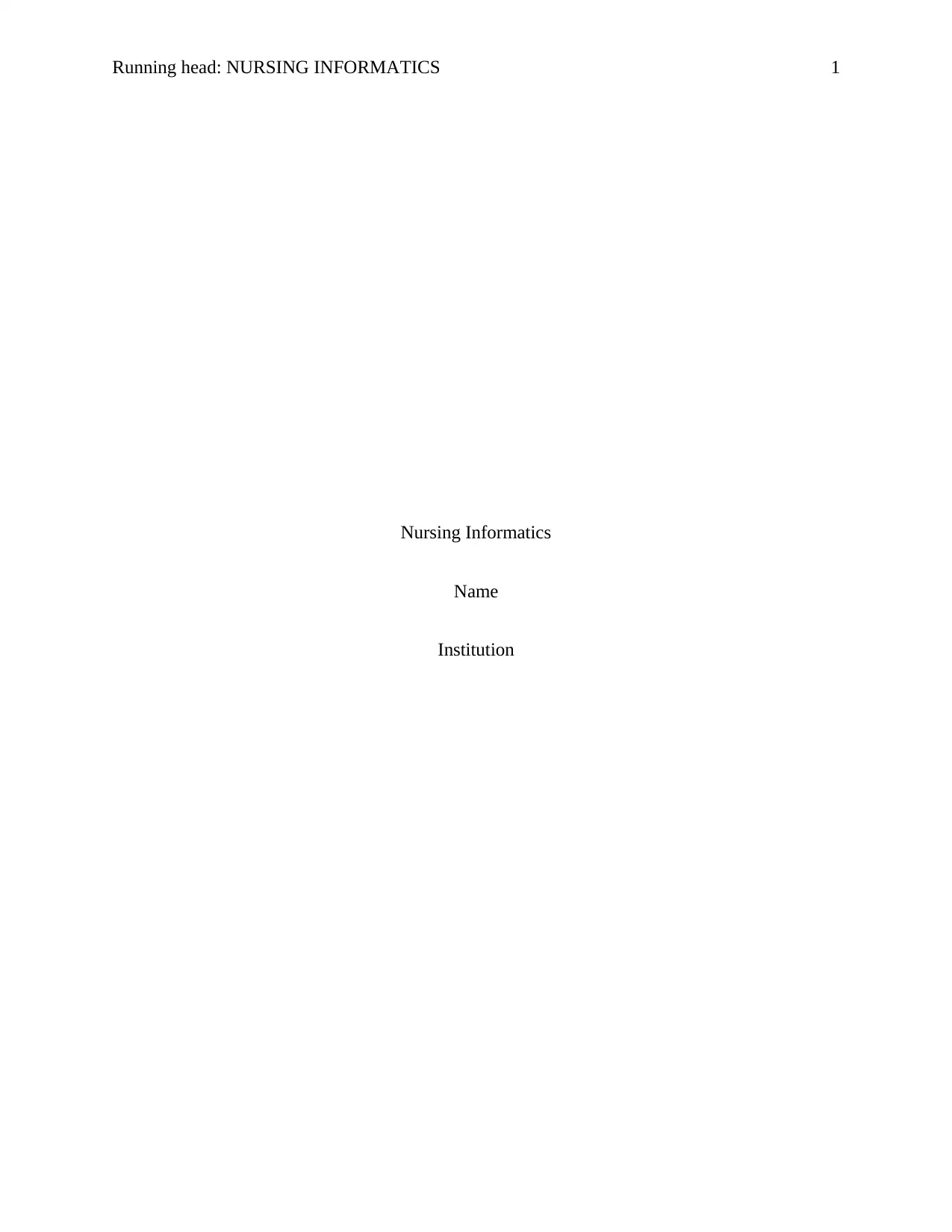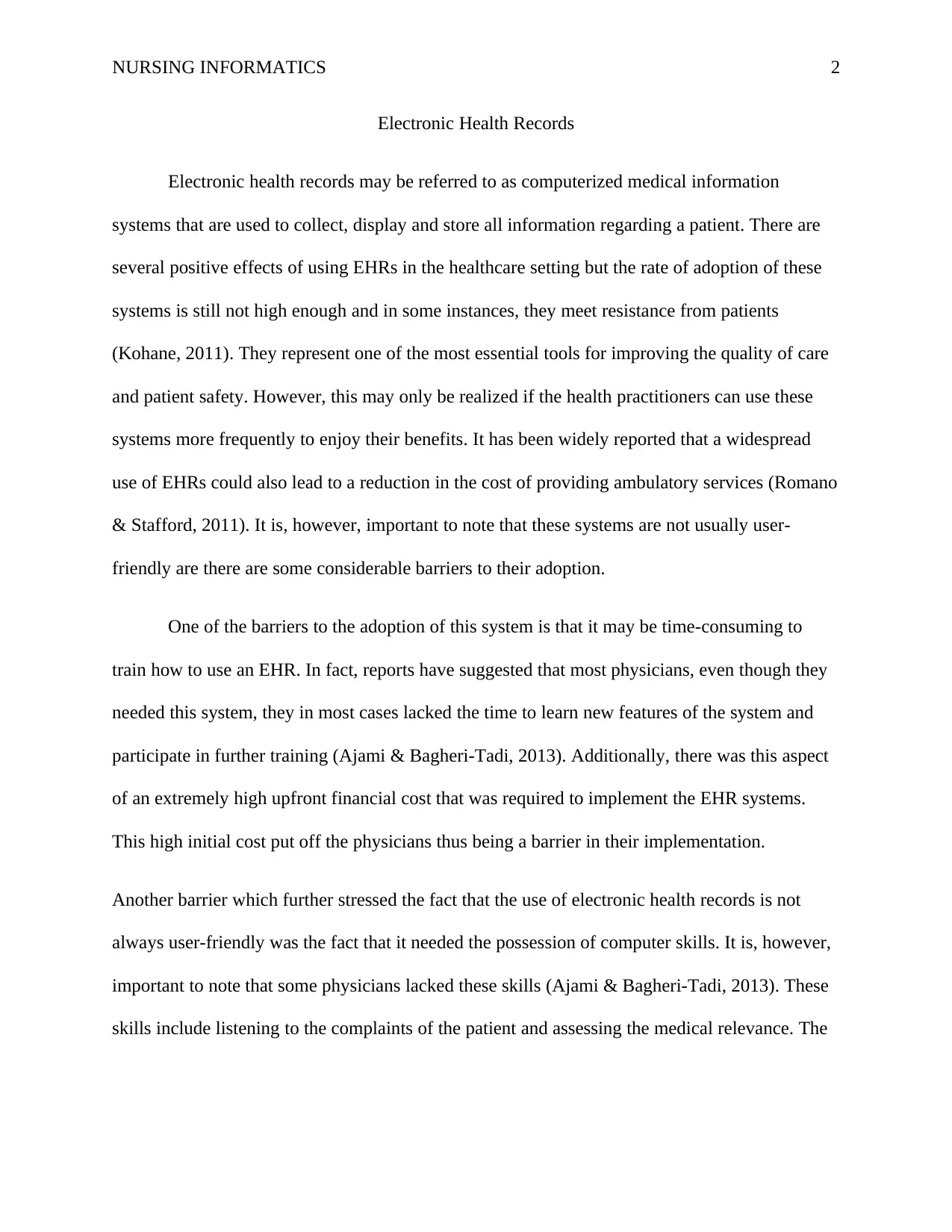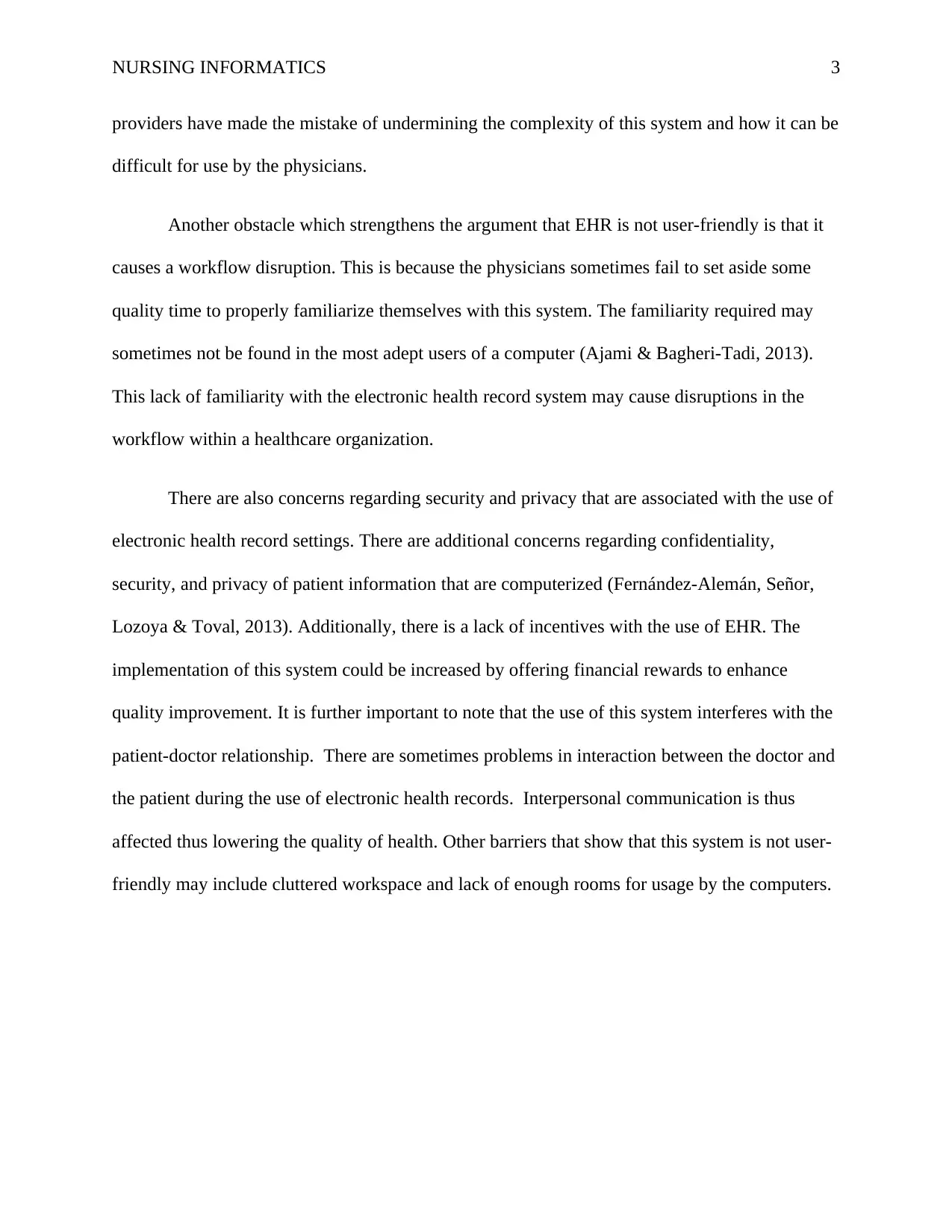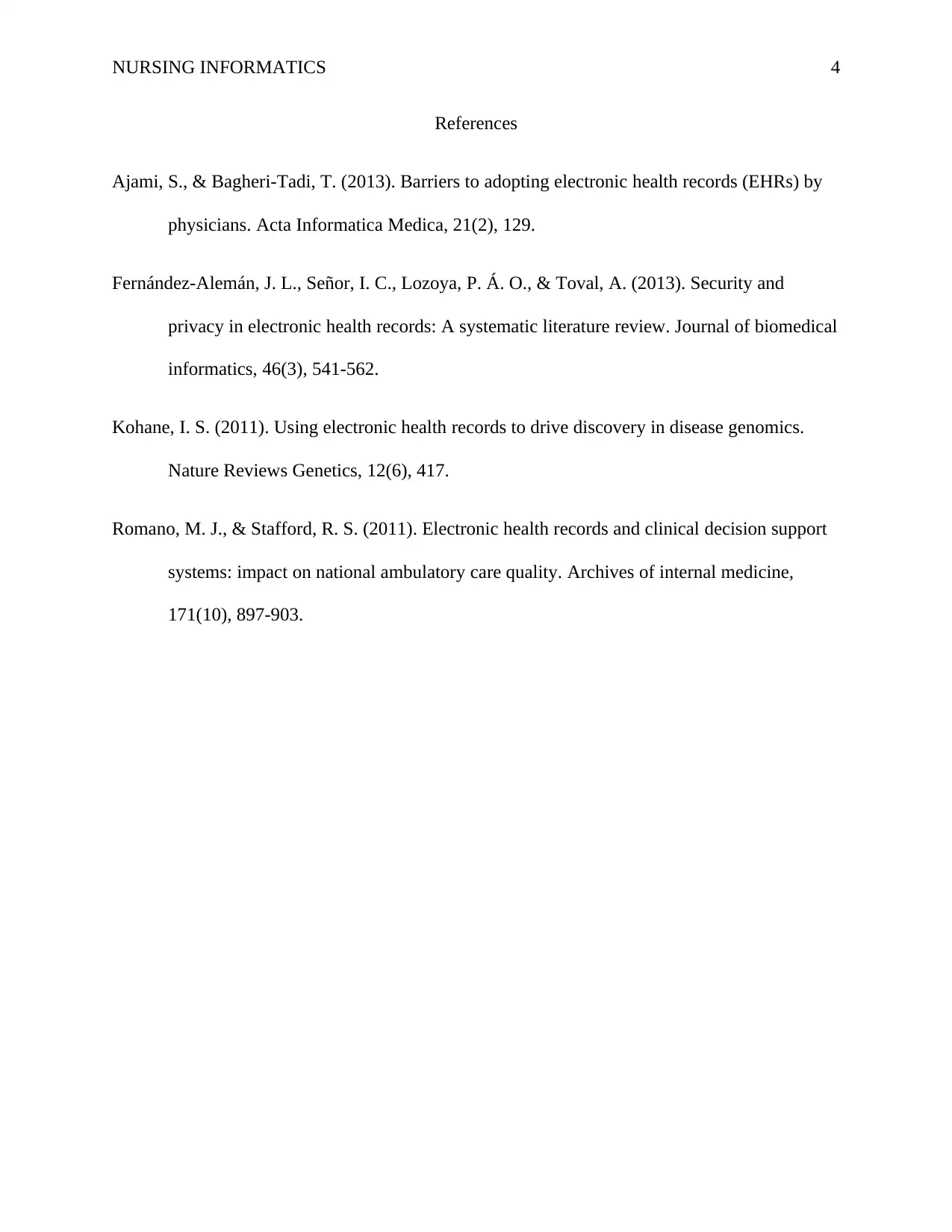Challenges in Nursing Informatics: Adopting Electronic Health Records
VerifiedAdded on 2023/06/03
|4
|784
|339
Essay
AI Summary
This essay explores the challenges and barriers to the widespread adoption of Electronic Health Records (EHRs) in healthcare settings within the context of nursing informatics. While EHRs offer numerous benefits, including improved quality of care, patient safety, and potential cost reduction in ambulatory services, their adoption rate remains suboptimal due to various factors. These obstacles include the time-consuming nature of training on EHR systems, high upfront financial costs, lack of necessary computer skills among some physicians, workflow disruptions caused by unfamiliarity with the systems, and concerns regarding the security and privacy of computerized patient information. The essay also notes the lack of incentives for quality improvement and the potential for EHR use to interfere with the patient-doctor relationship, along with practical issues like cluttered workspaces. Addressing these barriers is crucial to fully realizing the potential of EHRs in enhancing healthcare delivery.
1 out of 4











![[object Object]](/_next/static/media/star-bottom.7253800d.svg)